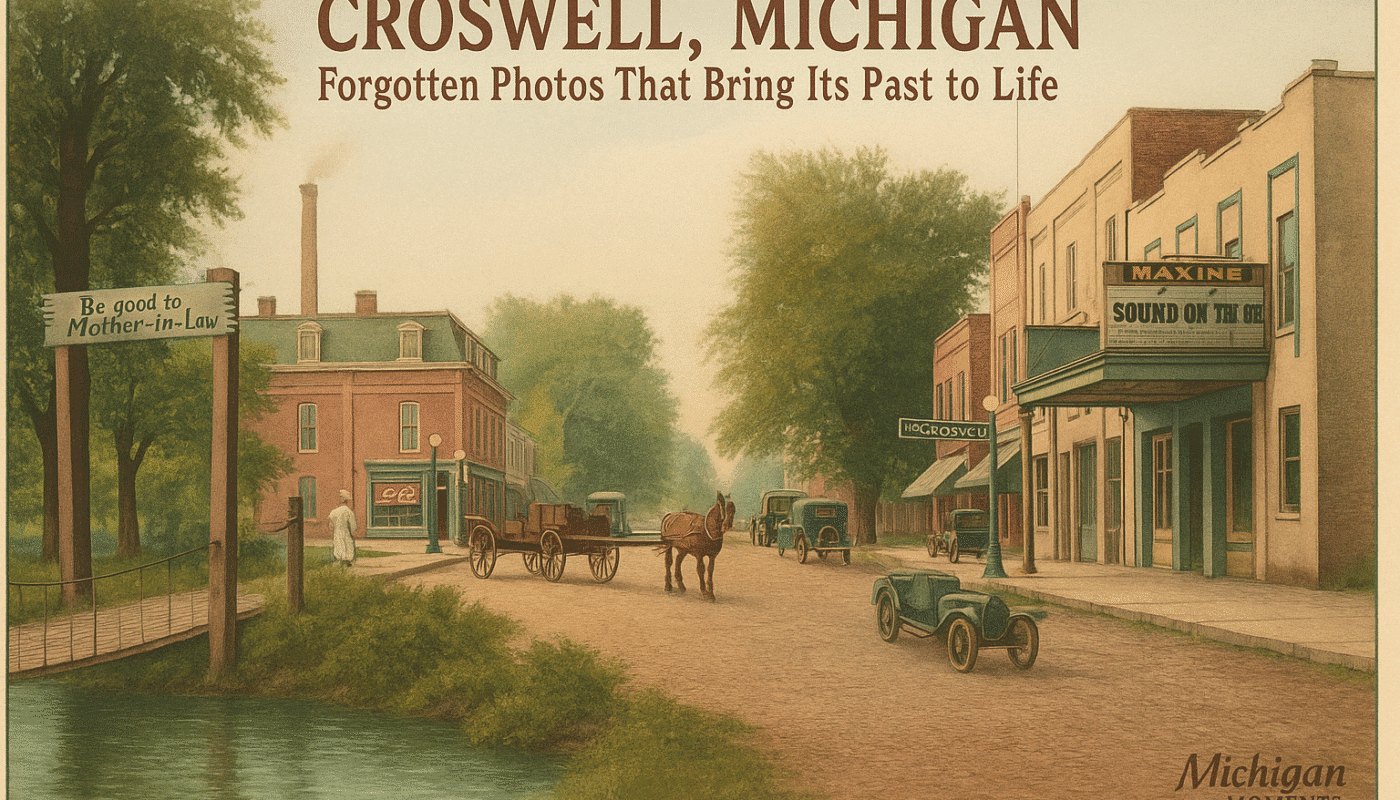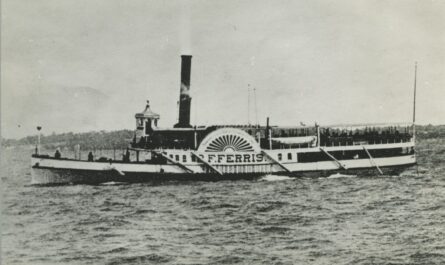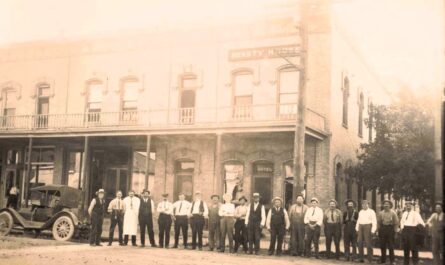At the turn of the 20th century, Croswell, Michigan wasn’t just a town—it was a system. An organized, working rhythm powered by farms, factories, horses, and the river that cut through it. Today, those rhythms echo in preserved buildings, century-old bridges, and the faces in old RPPC postcards.
This is a closer look at Croswell Michigan history, captured between 1890 and 1940.
Video – Croswell Michigan History – Rare Photos That Reveal a Working-Class Town’s Roots
This is the story of Croswell, Michigan, through the lens of early 20th-century photography. Featuring rare images of canneries, river bridges, and everyday labor, it captures the working rhythm of a small town that powered itself—one beet, one bridge, and one step at a time.
Howard Avenue: Where the Town Breathed
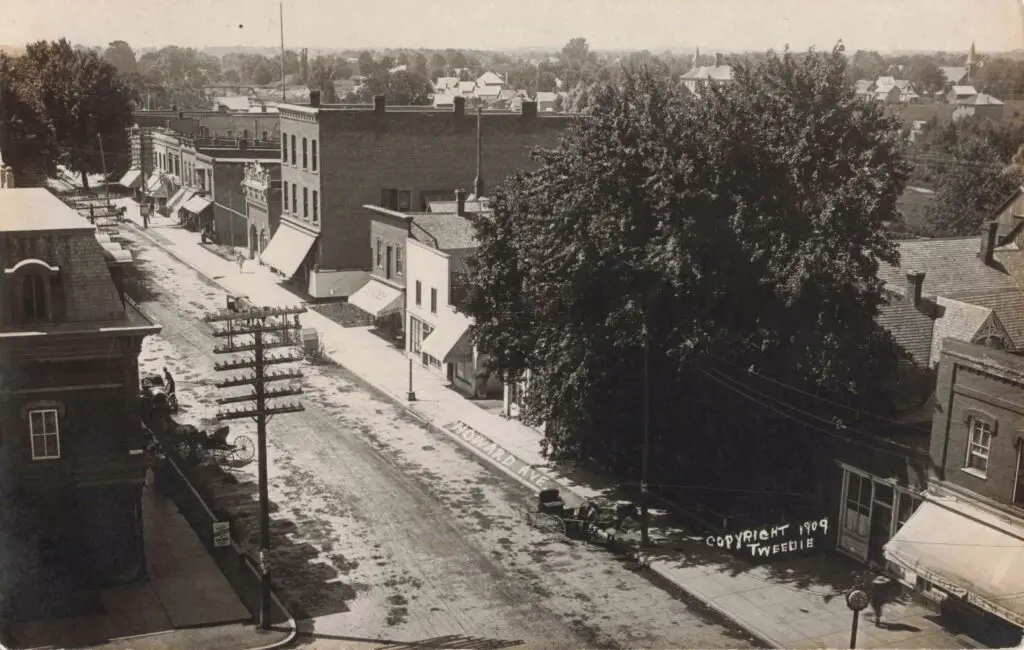
The central spine of Croswell, Howard Avenue, was more than a main street. It was where goods changed hands, stories were told, and neighbors gathered. Brick buildings stood two and three stories high. Each one held something vital—druggists like L.C. Stirling, clothiers, grocers, and professional offices upstairs.

Electric lines and telephone poles rose between the buildings. Horses stood hitched along the curb. Wagons rolled past striped awnings, each bearing a family name. On a Saturday, you could hear music playing from an upstairs window or the distant hum of machinery down by the river.
First National Bank and the Opera House Upstairs
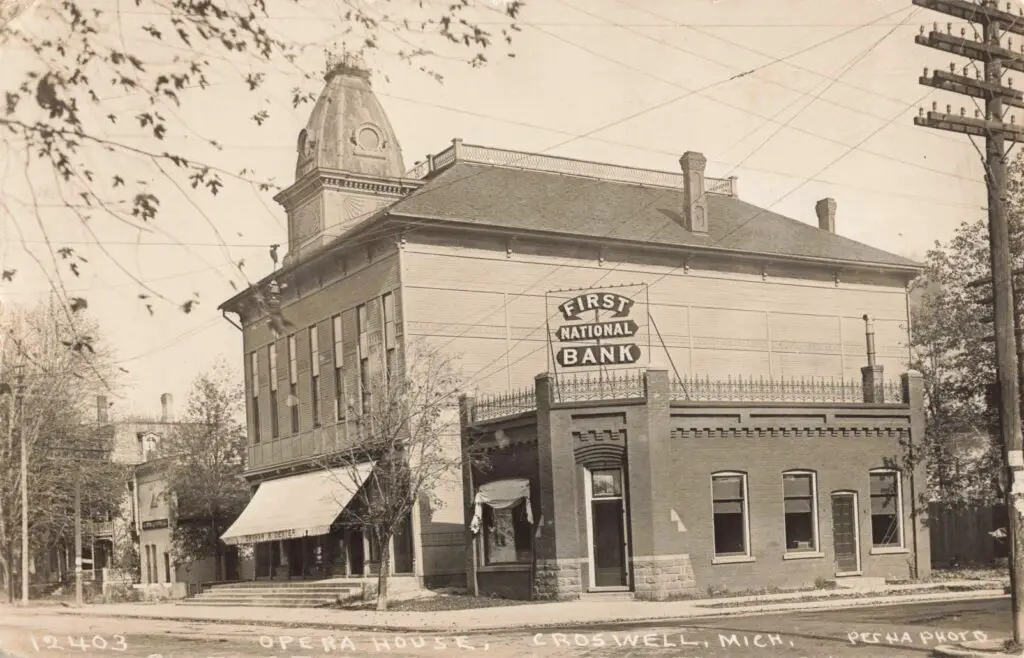
No building better represented ambition than the First National Bank. Its sign was bold, its construction solid. But the surprise wasn’t at street level—it was overhead.
Above the bank sat Croswell’s opera house, a space for public gatherings, shows, and speeches. Long before multiplexes, towns like Croswell relied on halls like this for culture and connection. It was a space for school graduations, civic debates, and the occasional traveling vaudeville act.
In many Michigan towns, bank buildings housed such stages. It was efficient—and symbolic. The same place you secured a mortgage might be where you watched your daughter’s first recital.
Roach Cannery and Hart Canned Foods
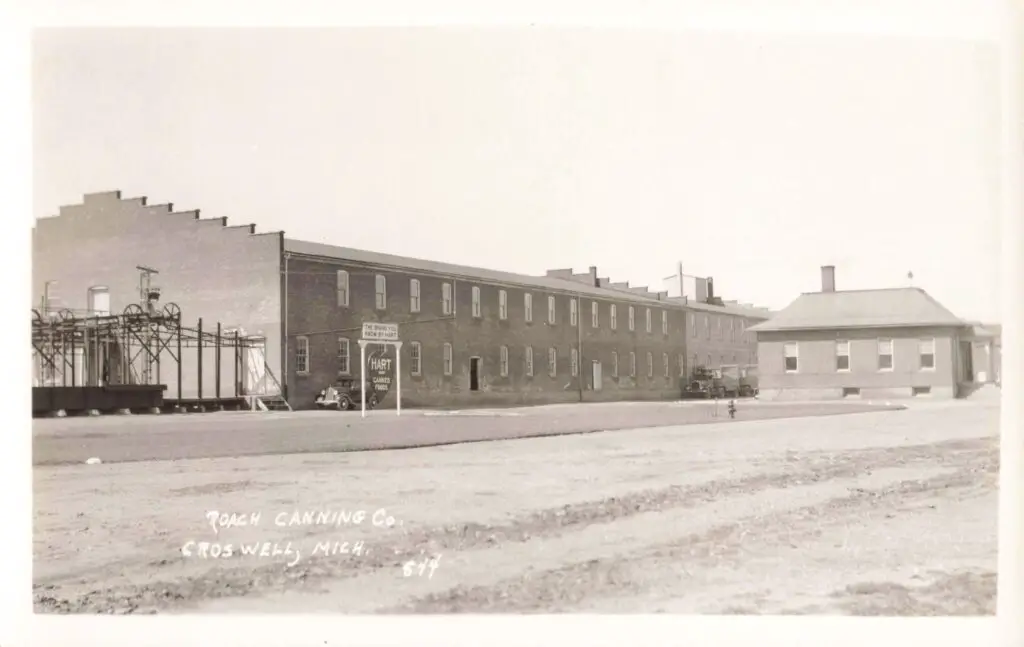
Industry ran on seasonal timing. The Roach Canning Company was one of Croswell’s engines. Located near the rail line, this facility packed tomatoes, corn, and peas. Later known as Hart Canned Foods, it was part of a regional network feeding the Midwest and beyond.

During harvest, wagons lined up outside with produce from nearby fields. Inside, heat and steam filled the air as workers labored long shifts. It wasn’t glamorous, but it kept Croswell working through lean years and long winters.
The building still stands today, now converted to apartments—recast, but not forgotten.
A River That Lit the Town
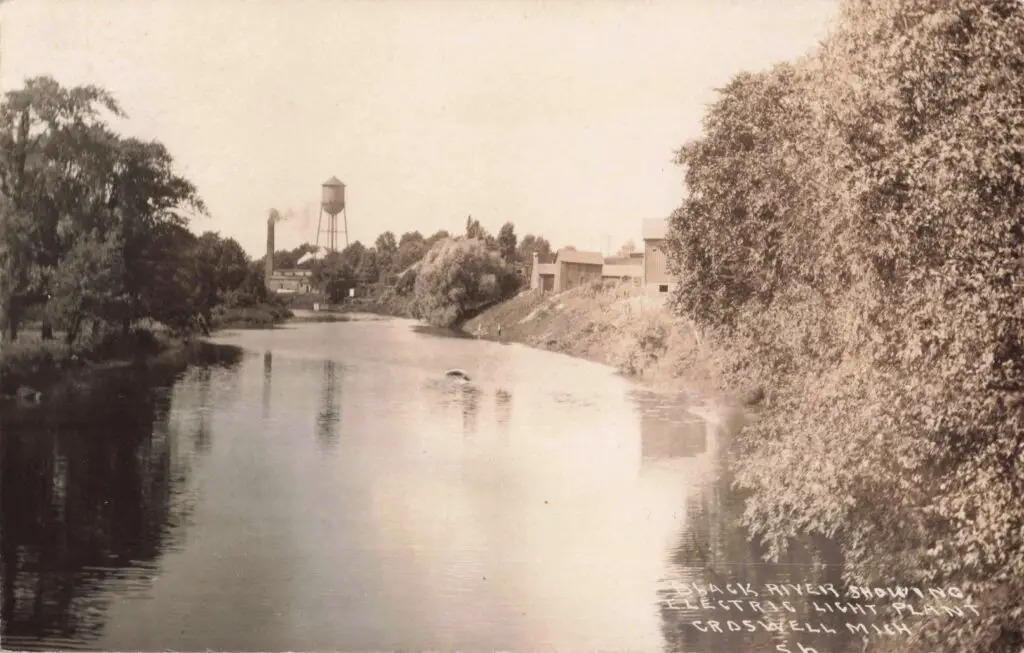
The Black River didn’t just shape the town—it powered it. One historic photo shows the waterway next to the electric light plant. Long before a central power grid, small municipalities like Croswell operated their own facilities.
It was a modest operation, but enough to light the homes and businesses along Howard Avenue. That mattered in the darkest months. It meant shops could stay open later, children could read in the evenings, and families could gather around radios.
The Swinging Bridge—and Its Warning
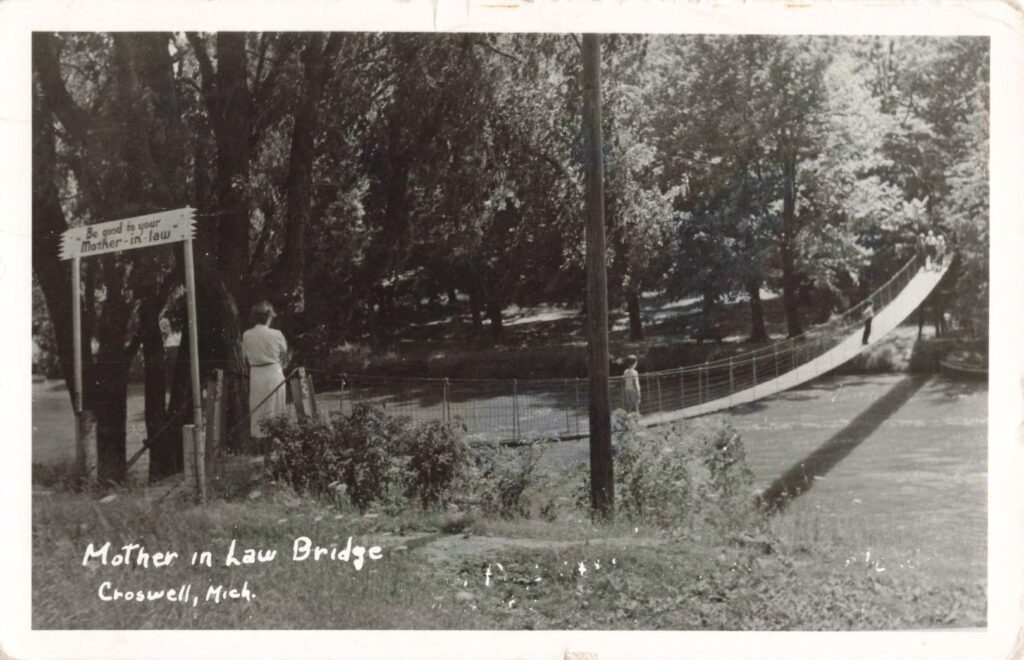
Croswell’s most iconic structure isn’t a factory or a church. It’s a footbridge. The Swinging Bridge, built in 1905, stretches over the Black River. Its steel cables and wooden planks carried countless schoolchildren, fishermen, and couples courting.
At its entrance stands a sign, simple and sarcastic: “Be Good to Your Mother-in-Law.” It’s a Croswell tradition as old as the bridge itself. No one knows who added the message, but it’s been repainted many times over the last century. Some say it was a town joke. Others say it was a challenge.
Either way, the bridge remains. It still wobbles and sways, and locals still smile as they cross it.
The Sugar Factory: Croswell’s Brick Giant
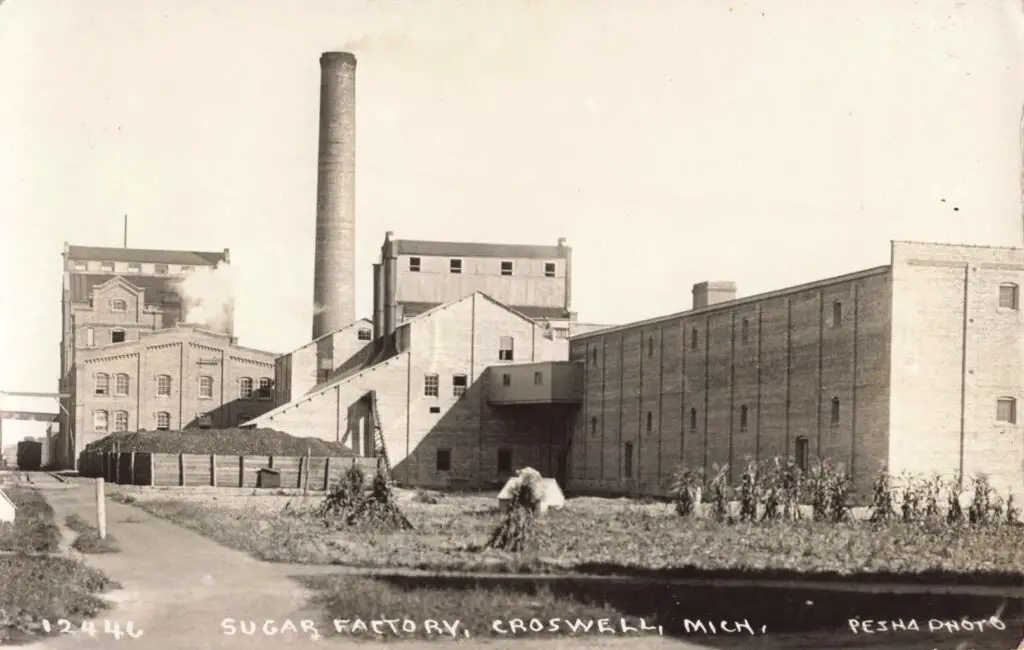
On the edge of town stood the sugar beet processing plant. Its towering smokestack dominated the skyline. Sugar beets were big business in the Thumb. From late September into winter, railcars and wagons hauled in tons of raw beet. Inside, furnaces ran day and night, reducing root crop to syrup, then crystallized sugar.
This wasn’t a sideline. It was core infrastructure for rural economies. The factory employed dozens. It supplied rail freight. It fueled school budgets through taxes.
When the plant shut down in later years, it marked the end of an era. But its smokestack still casts a long memory.
Croswell’s Second Act
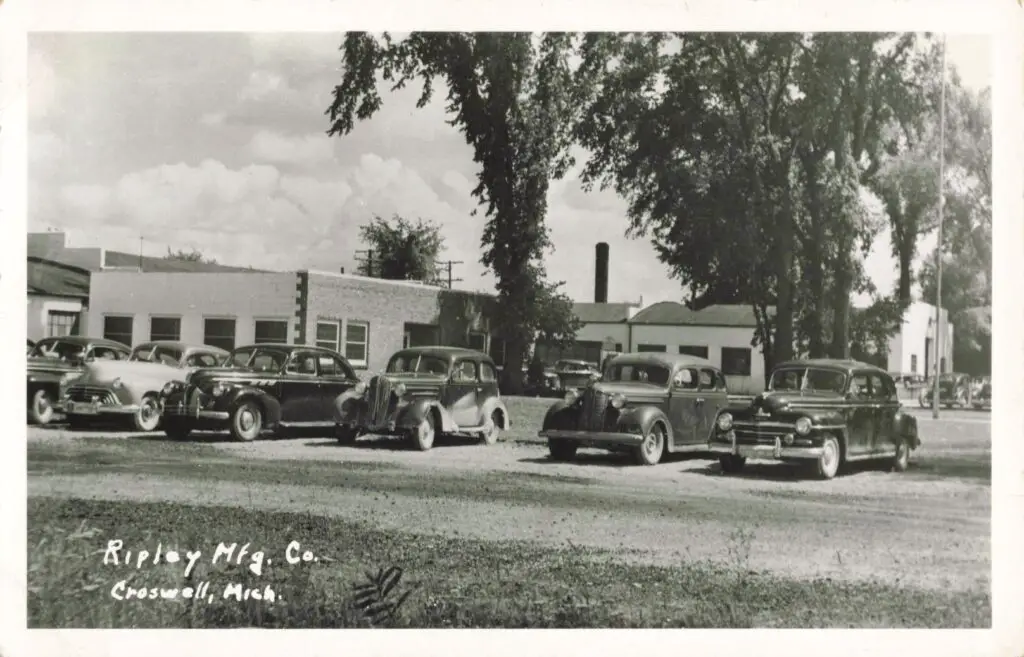
By the 1940s, Croswell had begun to modernize. Automobiles parked where horses once waited. Ripley Manufacturing moved in, building parts for Detroit’s auto boom. The local economy shifted. But the heart of Croswell Michigan history—its architecture, its civic pride, its river-powered legacy—remained intact.
Today, the opera house hosts community events. The cannery is now housing. The bridge still swings. And the town continues to honor its past without getting stuck in it.
Why Croswell Michigan History Still Matters
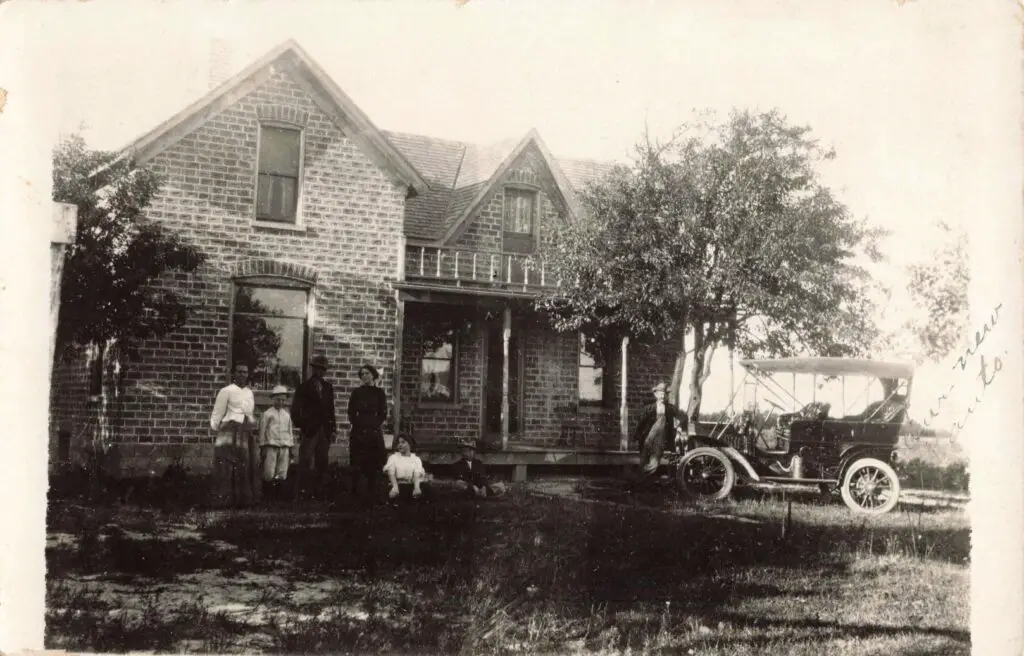
Croswell tells the story of a Michigan town that built things—canned food, refined sugar, and young voices in school plays. It kept moving through each season, even as the world outside changed.
These photos, now digitized and preserved, aren’t just snapshots. They’re evidence. Croswell mattered. It still does.

